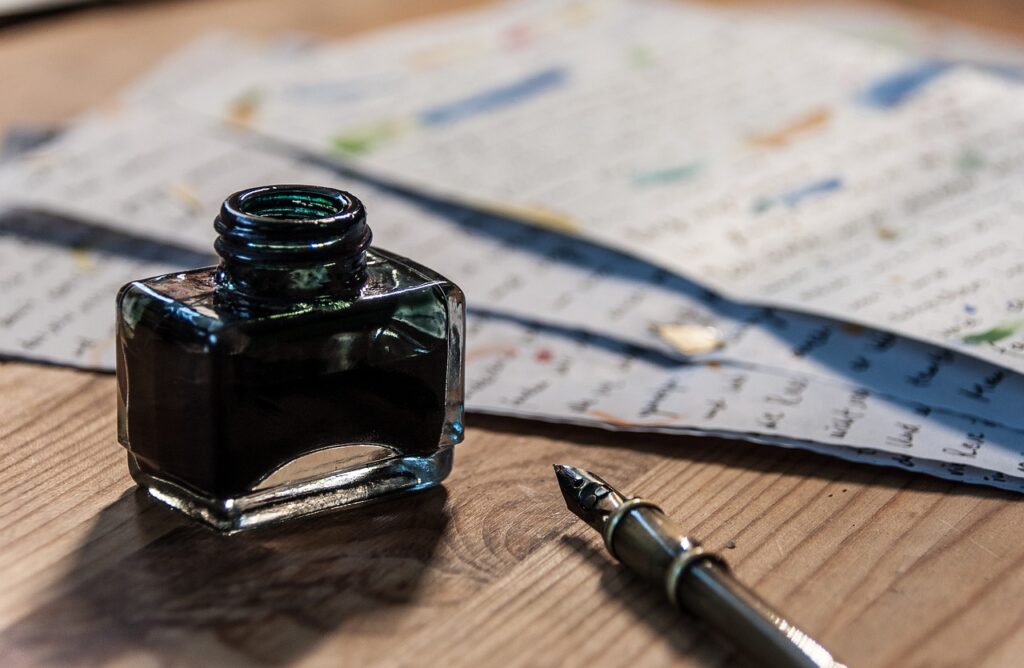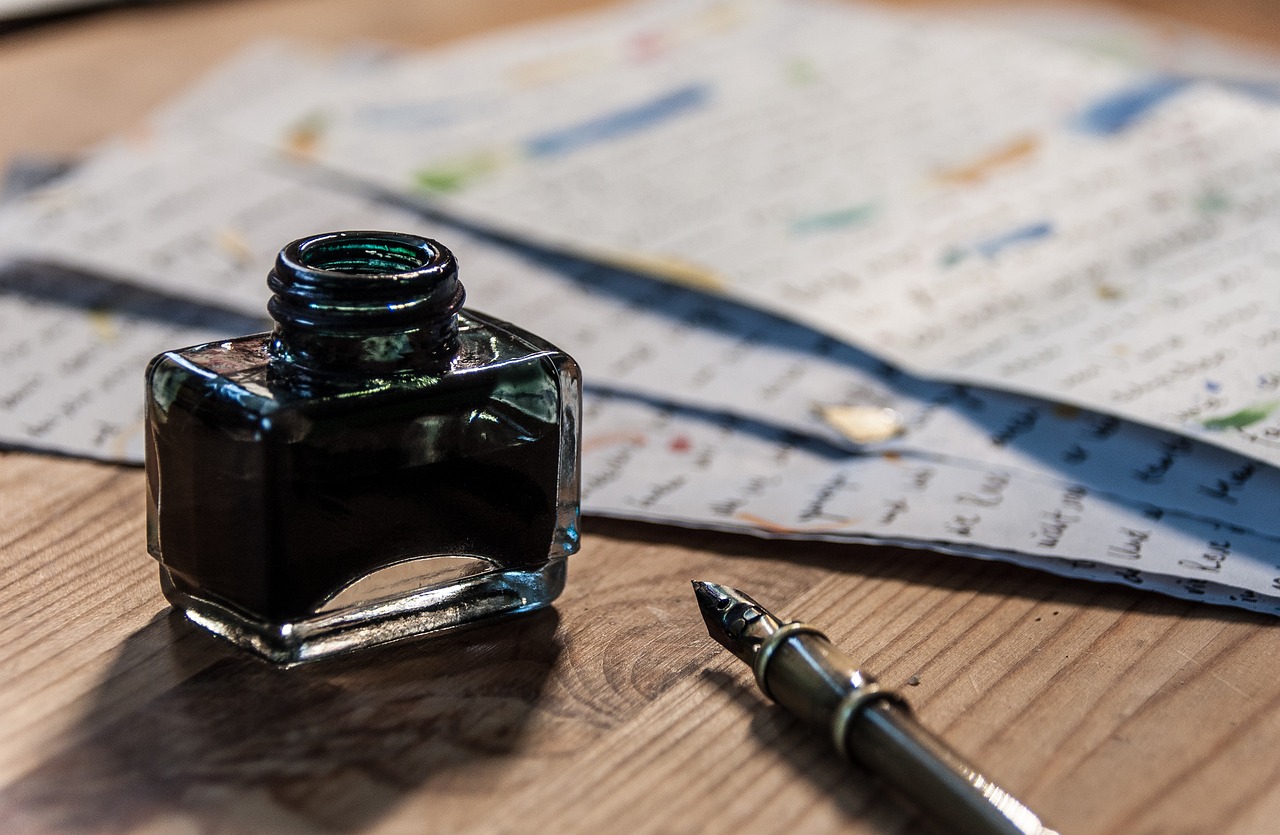If you don’t have some understanding of what metered poetry is, then the idea of free verse poetry won’t feel as liberating to you. It might help if I compare it something. Imagine a sewing pattern. Patterns are meant to be cut and used precisely as they are; they are pre-designed with measured specifications. That’s what metered poetry is like. Free verse poetry has a definite direction and end result. It just doesn’t follow a template. It’s like making a dress without a pattern, but also having the skill to do it. The seamstress would rely more on instinct and the body in front of them for guidance.
Literary definition of free verse poetry
Free verse poetry does not contain meter (a consistent pattern of stressed and unstressed syllabic phrases), and it usually doesn’t rhyme. Traditionally, meter in a poem is what creates a rhythmical sound. However, a free verse poem can still have rhythms if the poet pays particular attention to creating a musicalness with the smoothness of the words they string together.
The NTC’s book of literary terms describes free verse as “A type of poetry that differs from traditional verse form in that it is “free” of the regular beat of meter, depending instead on the individual poet’s sensitivity to the music of natural speech rhythms. Also, free verse usually lacks rhyme and often has irregular line lengths and fragmentary syntax.”1
Example
Here is an example of a free verse poem by Joy Harjo. You’ll notice that there is no rhyme or meter (repetitive pattern of sound), but there is the sing-song melody of a prayer or a chant. To hear the author read the poem and so you can hear how rhythm can be present in a free verse poem, listen to her audio at the Poetry Foundation website.
Eagle Poem2
To pray you open your whole self
To sky, to earth, to sun, to moon
To one whole voice that is you.
And know there is more
That you can’t see, can’t hear;
Can’t know except in moments
Steadily growing, and in languages
That aren’t always sound but other
Circles of motion.
Like eagle that Sunday morning
Over Salt River. Circled in blue sky
In wind, swept our hearts clean
With sacred wings.
We see you, see ourselves and know
That we must take the utmost care
And kindness in all things.
Breathe in, knowing we are made of
All this, and breathe, knowing
We are truly blessed because we
Were born, and die soon within a
True circle of motion,
Like eagle rounding out the morning
Inside us.
We pray that it will be done
In beauty.
In beauty.

Image by wal_172619 from Pixabay
Metered poetry
For metered poetry, there are five rhythmical patterns. Each one contains a defined number of stressed and unstressed syllables. When you have one of these, that equals a poetic “foot.” Then we further define the pattern based on how many of those feet are placed together in one line. A poem written in meter sticks to the same style throughout the poem. So, for example, every line could have the repetition of unstressed/stressed, and there could be four of these in a row. Each line of the poem would contain this string of purposely placed and chosen words because of how those words are stressed. The example I just suggested would be called iambic tetrameter.
According to NTC’s Dictionary of Literary Terms, meter is defined as “The fixed (or nearly fixed) pattern of accented and unaccented syllables in the lines of a poem that produces its pervasive rhythm”3.
Example
Here is an example of a metered poem by Robert Frost. Read it aloud or listen to the author read the poem. You can hear the clearly repeated patterns in each line. It is written in iambic tetrameter.
The Road Not Taken4
Two roads diverged in a yellow wood,
And sorry I could not travel both
And be one traveler, long I stood
And looked down one as far as I could
To where it bent in the undergrowth;
Then took the other, as just as fair,
And having perhaps the better claim,
Because it was grassy and wanted wear;
Though as for that the passing there
Had worn them really about the same,
And both that morning equally lay
In leaves no step had trodden black.
Oh, I kept the first for another day!
Yet knowing how way leads on to way,
I doubted if I should ever come back.
I shall be telling this with a sigh
Somewhere ages and ages hence:
Two roads diverged in a wood, and I—
I took the one less traveled by,
And that has made all the difference.
Beginners: start with free verse
If you are a beginning poet, I recommend writing free verse and then experimenting with meter for fun. I say this because you’ll be able to see your ideas become poems in less time. You’ll also start to get acquainted with all that’s available to you for including in your poetry. Some people say that modern poetry should not be metered and that it’s outdated. I don’t agree. Metered poetry to me is like a puzzle. It definitely takes me more time to write it, but I enjoy the process. Because I usually write free verse, I enjoy practicing with meter when I’m in the mood to try. I’ve also found that writing metered poetry makes my free verse flow that much smoother when I sit down to write it.
My digital course, Poetry Made Simple: From Idea to Poem in 10 Easy Steps, will show you how to write a free verse poem. You’ll be amazed at how easy it can be. In the course I also offer you ways to enhance your poetry, but those are entirely optional. Now matter what, though, when you complete the course, you’ll have a poem you can be proud to say you composed.
- Morner, Kathleen and Ralph Rausch. “free verse.” NTC’s Dictionary of Literary Terms. NTC Publishing Group, The McGraw Hill Companies,1991, p. 89 ↩︎
- Poetry Foundation. “Eagle Poem.” retrieved on January 23, 2025. https://www.poetryfoundation.org/poems/46545/eagle-poem ↩︎
- Morner, Kathleen and Ralph Rausch. “meter.” NTC’s Dictionary of Literary Terms. NTC Publishing Group, The McGraw Hill Companies,1991, pp. 133-134. ↩︎
- Poetry Foundation. “The Road Not Taken.” retrieved on January 23, 2025. https://www.poetryfoundation.org/poems/46545/eagle-poem ↩︎
